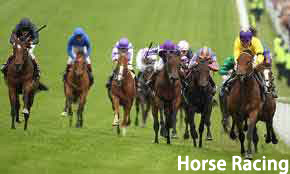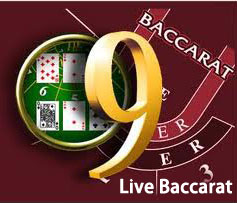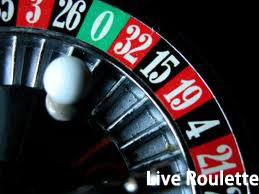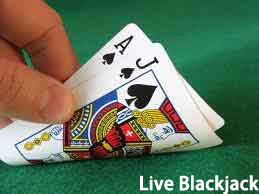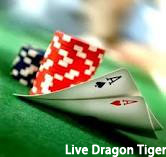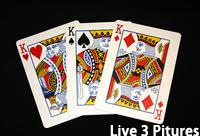- Activities >> Macau Attractions
- Temples
- Publisher: admin Time:2011/11/13 Hits:5445
Religions of China
Macau is a rich repository of Chinese culture, preserving the classic architecture of traditional temples, and offering an insight into the beliefs and practices of religions which have been adopted over the centuries and are still widely observed in Macau.These religions combine a fabulous folklore, a code of morals and a very pragmatic system for dealing with the problems and puzzles of life. The underlying belief is that reward and punishment here and in the hereafter depend on a person's behaviour, devotion to the gods and respect for the souls of his ancestors, who share a spirit world with dragons, serpents and witches.
China's earliest deities were mythical creatures which controlled nature. Two formalised religious appeared a century or so before the Christian era. From India came Buddhism with its promise of enlightenment through prayer and good deeds. At the same time the legendary Chinese teacher Lao-tzu introduced Taoism in which brave and virtuous humans became gods with magic powers to help mankind. Both religious preach the sanctity of life (many devotees are vegetarians), reverence for the gods, filial piety and harmony with nature.
There is no jealousy between the gods and the Chinese believe in taking advantage of all possible divine power. As a result almost all temples in Macau (as in traditionalist China) are miu, where a combination of Buddhist, Taoist and Animist gods are worshipped.
Gods and Goddesses
The central figure of Buddhism is Sakyamuni, who achieved nirvana through meditation. He is often worshipped as one of the Three Precious Buddhas, along with Amitabha, Lord of the Western Paradise and the Healing Buddha. Other deities are Bodhisatva or Pusa who achieved nirvana but chose to serve humanity. The best loved is the Goddess of Mercy, Kwan Yin, known in Macau as Kun Iam.Taoism has gods for every possible need and occasion. Most were deified for their great virtues or miraculous powers when on earth. In Macau the most popular is the Goddess of Seafarers, Tin Hau, or A-Ma as she is often called. She is said to have been a poor girl from Fukien who had power to save fishermen from storms. Another favourite is Kwan Tai, also known as Kwan Kung or Mo, a scholar and warrior who became God of Riches, Literature, War and Pawnshops. (Many police stations keep a shrine dedicated to him). Other deities are worshipped by girls seeking husbands, women wanting children, students taking exams, gamblers, invalids, etc.
In many temples two large statues stand on either side of the main altar. They are the legendary guardians: axe-carrying Thousand-Li Eye, who can see to infinity, and club-wielding Favourable-Wind Ear, who can hear everything. In addition temples often have shelves filled with the 60 tai sui, gods in charge of each year of the Chinese calendar. The worshipper makes offerings to the god of the year he was born in.
Also throughout Macau there are small shrines with characters bearing the god's name found in homes, restaurants and shops, while stones inscribed to district gods occupy many streets corners.
Temple Architecture
All temples are built on the most favourable site according to Fung shui, a geomantic system followed by even the most sophisticated Chinese. Ideally - and usually in Macau - the buildings face the sea or a broad valley and back onto a hill, which is home for potentially dangerous dragons.Architecturally the roof is a dominant feature. It is usually of green or yellow rounded tiles and steeply raked. The ridgepole is decorated with porcelain figures of divinities and lucky symbols such as dragons and carp. Eaves are usually richly adorned with colorful wooden carvings or clay friezes. Stone lions often guard the door.
Inside is a small courtyard with a large bowl where incense and paper offerings are burnt. Beyond is the main hall with an altar table, often with an intricately carved front, on which are the Five Ritual Vessels (an incense burner, candle sticks and flower vases) and offerings of fruit and soft drinks. Behind is the altar with its images framed by red brocade embroidered with gold characters. Depending on the size and wealth of the temple there are gongs, drums, side altars and adjoining rooms with shrines to different gods, chapels for prayers to the dead and displays of funerary plaques. There are also living quarters for the temple keepers.
Macau's temples are individually managed and financed solely by contributions from the faithful. The most prosperous support hospitals and homes for the poor or aged.
Prayer and Worship
There is no set time for prayer and no communal service except for funerals. Instead the worshipper comes when he pleases to make offerings, pray for help or give thanks. The temple keeper, in casual singlet and sandals, earns his living by selling joss sticks or spirals of joss which are suspended from the ceiling and burn for two weeks. He also charges for interpreting fortunes. These are numbered to correspond with numbered sticks of wood which the worshipper shakes in a cylindrical box called a chim until one falls out. Another way of getting advice from the gods is tossing "Sing Pui", two pieces of wood with irregular sides which indicate a positive or negative response to a question.Funerals are very important and provide the priests with much of their income. Relatives buy paper luggage, cars, televisions sets, houses and bundles of "money" which they burn to ensure that the spirit of the dead person will be comfortable while it waits for the final judgement.
Visitors are welcome in any temple in Macau. Photography is usually allowed but it is best to ask permission. It should also be remembered that, informal though it seems, the temple is a house of devotion where courtesy and respect should be shown. A coin in the box for "oil" money to keep the lamps burning is appreciated.
Visitors are also warned that on festival days temples are usually packed with worshippers burning joss and making offerings - very colourful but crowded and confusing.
Kum Iam Tong
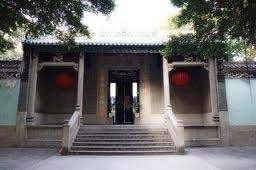
This Buddhist temple dedicated to the Goddess of Mercy was founded in the 13th century and the present buildings date from 1627. It is one of the biggest and wealthiest of Macau's temples with a huge entrance gate and roofs clustered with porcelain figures. Separated by open courtyards are richly decorated halls dedicated to the Precious Buddhas, the Buddha of Longevity and Kun Iam, who is dressed in embroiled silk with a fringed crown (which is changed every year). She is attended by 18 Buddhas on either side of the altar. In adjoining rooms are funeral chapels and scrolls honouring Kun Iam in pictures and calligraphy.
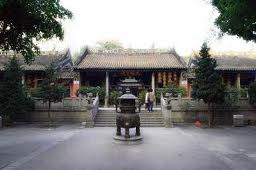
Behind the temple are terraced gardens. In one is the stone table on which was signed the first Sino-American treaty on July 3, 1844, by the Viceroy of Canton Ki Ying and the United States Minister Caleb Cushing. Nearby is the marble statue of a monk in an ornate pavilion, and four ancient banyan trees with branches intertwined which is known as the Lovers Tree and a symbol of marital fidelity.
In other parts of the garden are fountains shaped like miniature Chinese landscapes, groves of bamboo and small shrines to departed priests. The festival of Kun Iam is celebrated on the 19th day of second, sixth, ninth and 11th moons.
Address: Avenida do Coronel Mesquita
Lin Fung Miu
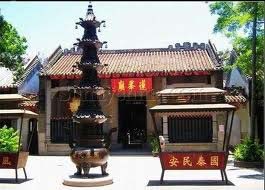
(Temple of Lotus)
Built in 1592 and most regularly restored, this Temple of the Lotus has a fine facade of intricate clay bas-relief carved in the 19th century depicting historical and mythological figures. Stone lions guard the entrance. Inside is a hall with a statue of Tin Hau on the altar, flanked by the guardian generals. Beyond is a courtyard decorated with a frieze of writhing dragons, a lotus filled pond and fine iron brazier. The main hall is dedicated to Kun Iam, whose statue occupies an elaborate altar. Aside altar has a shrine to Kwan Tai. The temple's ceiling is a particularly good example of the black beams and exposed white tiles construction. Lin Fung Miu is historically famous as the place where for centuries Chinese Mandarins from Guangdong Province would stay when they came to Macau. The most renowned visitor was Commissioner Lin Zexu, who spent most of September 3rd 1839 in Macau. He is honoured with a six-foot granite statue and a new museum in the temple courtyard.
Address: Avenida do Almirante Lacerda
Lin Kai Miu
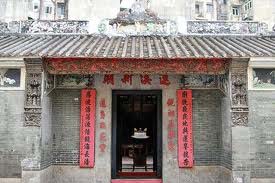
(Stream of Mourning Temple)
Dating from the 17th century, this temple occupies a square off Estrada do Repouso in the Patane district, where a regular flea market is held. The temple has facade with some fine granite carvings on the walls and ridgepole and large Chinese lion statues on the roof.
The main hall is dedicated to Ua Kuong,
 the dark-faced god who protects against fire. He is attended by Thousand-Li Eye and Favourable-Wind Ear. In one adjoining hall are goddesses associated with childbirth and rearing. Along the walls are 18 statues of goddesses with children, brightly coloured and expressive clay figures of the 60' year' gods. In another hall is a row of six Buddhist pusas. Kun Iam in her fringed-veil head-dress is worshipped in one of the halls where she shares an altar with a statue of Kwan Tai. A further hall is dedicated to the Monkey God, a popular character from Taoist mythology and hero of the literary epic monkey. The Lin Kai Temple supports a hospital and poor people's home. The festival of Ua Kuong is celebrated on the 28th day of the ninth moon.
the dark-faced god who protects against fire. He is attended by Thousand-Li Eye and Favourable-Wind Ear. In one adjoining hall are goddesses associated with childbirth and rearing. Along the walls are 18 statues of goddesses with children, brightly coloured and expressive clay figures of the 60' year' gods. In another hall is a row of six Buddhist pusas. Kun Iam in her fringed-veil head-dress is worshipped in one of the halls where she shares an altar with a statue of Kwan Tai. A further hall is dedicated to the Monkey God, a popular character from Taoist mythology and hero of the literary epic monkey. The Lin Kai Temple supports a hospital and poor people's home. The festival of Ua Kuong is celebrated on the 28th day of the ninth moon.Address: Travessa da Corda
Pou Tai Un
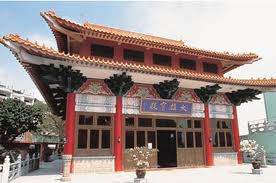
Pou Tai Un on Taipa Island is one of the best-endowed and most picturesque temples in Macau. It was founded in the 19th century by Buddhist monks and the original prayers hall contains images of the three Precious Buddhas.
Since then, both the monastery and temples have been extended and enriched by devotees. There are new pavilions with soaring yellow-tile roofs and an elegant status of Kun Iam
 on a marble-columned terrace.
on a marble-columned terrace.The monks live in adjoining building. When not busy with prayers, they tend a large vegetable garden and operate a vegetarian restaurant where some of the produce is prepared.
Whether vegetarian or not, visitors will enjoy this casual verandah cafe, where the freshness of the ingredients is matched by the imaginative preparation and wide range of dishes.
Address: Estrada de Sete Tanques
Kun Iam
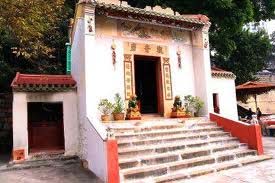 Kun Iam, at the foot of the cliff below the University of Macau, is a small, neat temple which contains an image of the goddess in a pink-tiled altar.
Kun Iam, at the foot of the cliff below the University of Macau, is a small, neat temple which contains an image of the goddess in a pink-tiled altar.

Bei Di Gu Miu
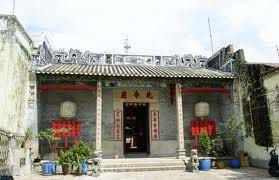
Bei Di Gu MiuTian Hou Miu
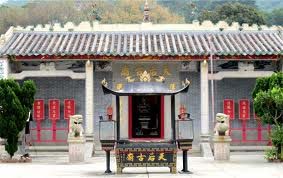
Tian Hou MiuTam Kung Miu
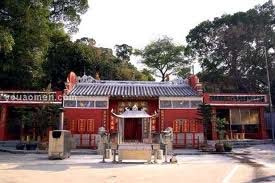
This temple, with a fine toll roof decorated with porcelain figures, is dedicated to Tam Kung, a Taoist god of seafarers. Beside his image, the temple contains a four feet long model of a dragon boat made from a whalebone, with a crew of wooden men in red robes and yellow hats.
There is also a dramatic mural of a tiger with club, big-eyed and orange striped, against a background of rocks and twisted pines.
There are two temples dedicated to Tin Hau in Coloane village. The larger, on Largo Tin Hau Miu has, at its entrance, a traditional fire engine, which had to be wheeled by hand. A short distance away, off Travessa da República, is a smaller temple, with some brilliant gilded carvings over the entrance and a moongate facing the sea.
Address: Avenida de Cinco de Outubro
Tai Soi Miu
(Temple of the Sleeping Buddha)
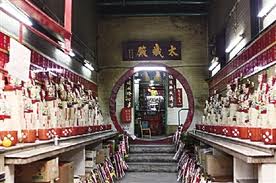
Built over 200 years ago, this temple is located in the old bazaar area behind Camões Garden, close to the Kiang Vu Hospital on Rua Coelho do Amaral. It is very popular, especially among women who come with offerings to the goddesses of fertility and child rearing that occupy one side of the temple. There are also a fine collection of year gods and prayer halls dedicated to Pau Kung, Taoist god of justice, and Kun Iam. Up a flight of steps and through a moongate is the main altar, with the image of the Sleeping Buddha, a small, gilded figure lying chin on hand. More steep steps lead to a shrine to Chung Kwai, Controller of Devils.
Address: Rua da Figueira
Kuan Tai Temple (Sam Kai Vui Kum)
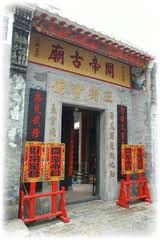
The temple is situated on the site of the old Macau bazaar, whose sign still exists. Originally it was a meeting place for merchants, and was very important to the local Chinese community. Prior to the establishment of the Chinese Chamber of Commerce in Macau in 1912, the area surrounding the temple was the centre of Chinese trading in Macau. After the decline of the bazaar, the temple rose to importance in this area.
Address: Rua Sul do Mercado de São Domingos
Na Tcha Temple
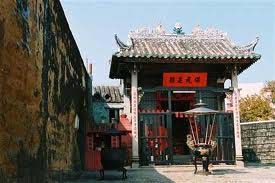
This temple was built in 1888 and dedicated to Na Cha in an attempt to halt the Plague rampaging at the time. In contrast to buildings such as the Ruins of St. Paul's around it, the Na Tcha Temple is only a small structure, built with simple materials, but the use of a mixture of reality and illusion in its design manages successfully to create a sense of delicacy and exquisiteness.
Opening hours: 08:00 ~ 17:00
- ·Previous:
Macau World Heritage
·Next: Fortresses
- Today:2016/6/26/ Sunday
- Make your homepage | Add to Favorites | Contact us | 简体 | 繁體 | English









